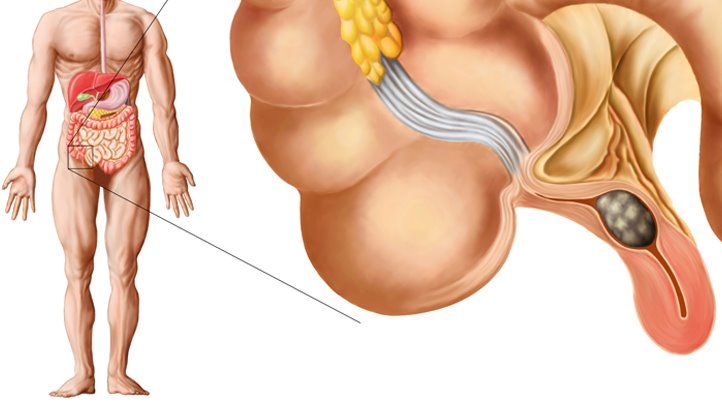Although its anatomical description dates back to the beginning of the 16th century and there are reports of appendectomies since 1736, the decrease in mortality from appendicitis was not considerable until well into the 20th century. An optimization in the process of diagnosis, treatment, techniques, and surgical procedures has increased the number of cases that can be treated early, without reaching the point of perforation and peritonitis.
Knowing well what appendicitis is and what its causes and symptoms are is basic to act in time and go to the doctor as to how much doubt arises as to whether we are facing an appendicitis attack.
What Is Appendicitis?
Appendicitis is the inflammation of a small intestinal bag elongated and narrowly, about 5 or 6 centimeters long, being a part of the large intestine, specifically the beginning of the colon and just at the point at which the small intestine and colon are joined. An appendix that can become infected and inflamed.
Appendicitis operation is the most common abdominal surgical emergency. The percentage of the affected population is between 5 and 15 percent, and it is common to suffer from between the ages of 10 and 30.
Causes
The cause of its inflammation lies in the obstruction of the mucus drain that produces the appendix. This mucus is usually mixed with stools, but, having no way out, any stopper causes a dilation in the appendix. As the appendix widens its size increases, compressing the blood vessels and filling with pus. The walls end up necrosing and, if not treated quickly, the appendix ends up breaking.
Such obstructions may either cause an increase in lymph tissues due to a bacterial or viral infection, or a traffic jam caused by a tumor or intestinalworm.
Symptoms of Appendicitis
Symptoms of appendicitis can be very varied and are not always easy to detect, especially in cases of young children or in adult women of childbearing age. One of the most characteristic symptoms a sudden and acute pain on the right side of the lower abdomen. A pain that passes quickly from mild to acute and is located at a very specific point, McBurney’s point. This pain becomes so intense that it prevents any activity from being done, calming down only if you are at rest.
In addition to this sudden pain that is moving and getting worse when moving or coughing, the most common symptoms are:
– A slight fever that increases as the process progresses.
– Nausea and vomiting.
– Loss of appetite.
– Chills.
– Abdominal swelling.
– Constipation or diarrhea.
– Flatulence.
Appendicitis usually goes through a series of stages ranging from the so-called catarrhal appendicitis, at which point the obstruction takes place, to phlegmonous and necrotic appendicitis, phases in which ulcerations occur and the tissue is distended. The last stage of the process takes place when the appendix is drilled.
Prevention
Specialists point out that, while it cannot be prevented, it is possible to adopt habits that reduce the chances of developing it. Thus, avoiding constipation is an excellent way to not have intestinal jams that can cause obstructions. For this, a diet rich in fiber is advisable that facilitates intestinal digestion and transit. It is also recommended to lead a quiet lifestyle, without stress.
If you are already in the early stages of the appendicitis process, it is advised to take antibiotics that stop the multiplication of microorganisms, minimizing the effects of the disease.
Treatments for Appendicitis
In addition to preventive measures, treatment if the process is complicated and aggravated is the surgical removal of the appendix.
At first, you need to do a CT scan that reveals abscess, and inflammation, and start antibiotic treatment. It is a question of reducing the focus of infection and inflammation to remove the appendix as soon as possible and prevent it from causing problems again. In the case of overweight and older persons, laparoscopy is often used.
Appendicitis has as its final stage peritonitis, the most serious phase in which the appendix has already been perforated, and it was until the beginning of the 20th century a disease with a high mortality rate. Advances in diagnosis, antibiotic treatments, and surgical techniques led to a decrease in the number of deaths from appendicitis. The mortality rate for appendicitis is currently 0.1% and between 0.6% and 5% in cases of peritonitis. Complications from late diagnoses can also arise in the elderly, pregnant, and lactating women.
After the operation, there are usually no complications, with a short recovery being made in time and the appendix is not drilled in the course of the intervention.

